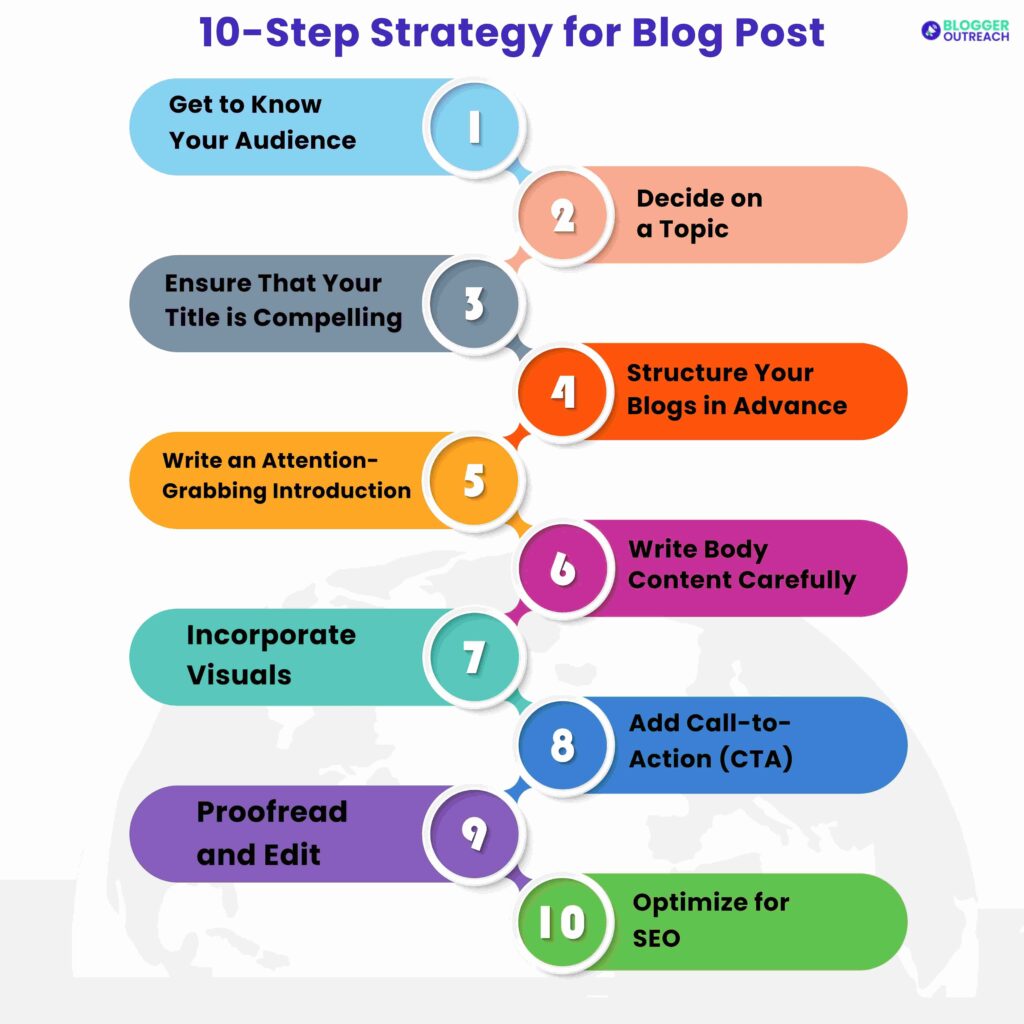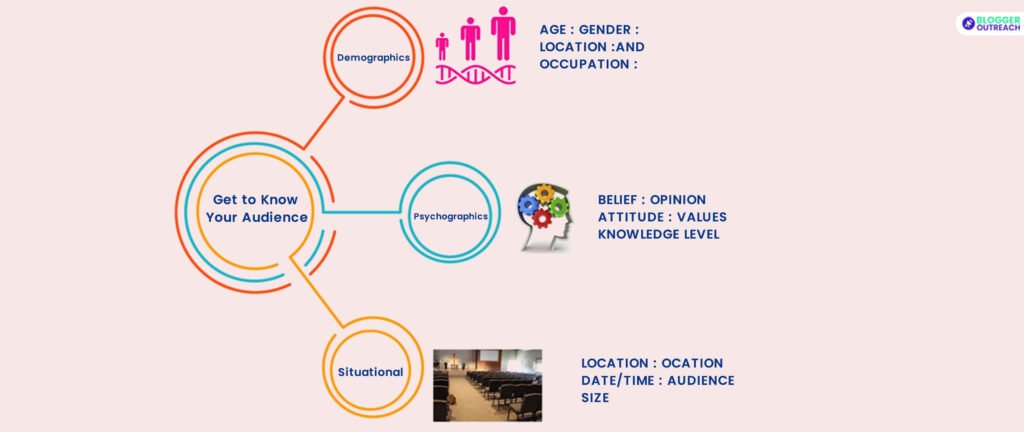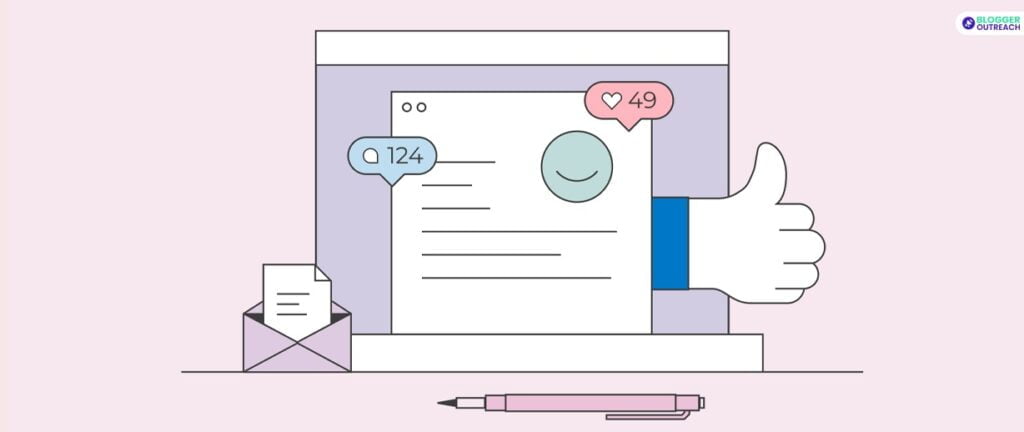Are you frustrated that your carefully crafted BLOG isn’t getting the attention it deserves?
Let us ask you a simple question – do you know the RIGHT way to write a blog?
If the answer is NO – don’t get intimidated because all the PRO bloggers have faced this problem.
What distinguishes a successful blog from one that doesn’t get a response?
We are 2023; the competition is cutthroat. Now, you need to produce captivating content. By doing so, you are more likely to attract your targeted audience.
So, how can you write a stellar Blog Post? No worries! We got you covered.
We’ve compiled a comprehensive guide to help you write content that resonates with your audience.
Starting from knowing your audience to penning down your words – you will get 10 essential steps that are essential for writing a blog.
Here’s what you need.
Table Of Content
10-Step Strategy For Blog Post

How to write a blog post? How to start a blog? Getting ready to learn the nitty-gritty of writing a successful blog post? You can find it here!
1. Get To Know Your Audience

Imagine your friend has asked you to visit his place. However, you do not know his address. How can you drive your car?
This is similar to writing a blog without having an idea about the target audience.
Put yourself in their shoes first. Try to think as if you are the reader. Now, think about what interests you, what challenges you face, and what information you would be seeking.
Next, conduct thorough research. Determine your target audience’s demographics, such as age, gender, location, and occupation. Learn about their hobbies, interests, and preferences. For example, your target audience might be health-conscious individuals who enjoy exercise and healthy eating.
Audience data can also be gathered using online analytics tools. They can reveal valuable information, including the content they engage with most, their platforms, and their interests.
Encourage feedback, comments, and questions on your blog, social media platform, or survey. This engagement gives us insight into their thoughts, concerns, and interests.
Learn more about where they are located. The size of the audience, etc. This is called situational analysis.
Understand your target audience better with buyer personas. This is a fictional representation of your ideal customers. Give them names, backgrounds, and specific characteristics to make them feel more real.
When writing your blog, envision yourself addressing these personas directly. This exercise helps you maintain a focused and personalized approach.
Perform competitor analysis. Analyze similar blogs or websites. Analyze their content, tone, and engagement.
2. Decide On A Topic

Yaay! You have taken the first step. You understand whom you are targeting. Now, it’s time to select a topic for your blog.
Next? Think about who you want to reach with your blog.
Are you targeting fellow enthusiasts in a specific field, beginners seeking guidance, or maybe a broader audience? – When you know this, you can tailor your content accordingly.
The common way to select a blog topic that is already popular. But, the problem with popular topics is that they are highly competitive and hard to rank.
Pro Tip: choose topics that are less competitive and have the potential to become popular.
How to find it? Google Auto Suggestion. Using Google, you can see prompts that are already been searched.

Additionally, consider trending topics or current events related to your niche. Stay updated with the latest news and industry developments.
3. Ensure That Your Title Is Compelling

Take a moment to think about the key points and unique aspects of your content that you want to highlight.
The title is like a book cover. It is something that tempts people to read your content. So, how to stand out with your title?
Here You Go:
Use strong and descriptive keywords in your title. For example, if you’re writing a blog post about healthy eating, consider incorporating words like “nutritious,” “delicious,” or “quick and easy” to grab the readers’ attention.
If your title sparks their interest or challenges their existing beliefs, they are more likely to explore further. For instance, you could write a title like “Unveiling the Surprising Secrets of Successful Entrepreneurs.”
Make it more compelling by adding an emotional touch to it. Joy, surprise, and intrigue can instantly capture the attention of readers. Consider using words that evoke emotions or create a sense of urgency, like “Unleash Your Creativity Today!” or “Discover the Hidden Gems of Travel.“
You can make your title more actionable by including numbers or specific outcomes. For example, “5 Proven Strategies to Boost Your Productivity” or “How to Lose 10 Pounds in One Month Safely.” This approach sets clear expectations for the reader and shows them the value they’ll gain from reading your blog post.
Remember to keep your title concise and to the point. Aim for around 6 to 10 words, if possible, to ensure it fits well in search engine results and social media previews.
4. Structure Your Blogs In Advance

Assume you are building a house.
It wouldn’t make sense to lay bricks without a blueprint, would it?
Writing a blog post requires a blueprint or a structure to guide you.
Here’s how you can do it:
Clarify the main idea or purpose of your blog post. What message would you like to convey to your readers? Do you want to educate, entertain, or persuade them? A clear objective will help you shape the structure.
After that, brainstorm the key points or subtopics that support your main idea. Your blog post will be organized around these points. Support your main idea with information or arguments.
Consider the most logical order in which to present your key points. An order can be based on chronology, importance, or complexity. Organizing your points logically ensures a smooth flow and enhances readability.
With your key points in order, create descriptive subheadings for each section. Subheadings serve as signposts for readers. They also provide a visual break and help break up your content into digestible chunks.
For every key point, gather supporting information such as examples, statistics, anecdotes, or expert quotes. They will add more depth and make it credible.
Add incorporating visual aids to enhance your blog post. Images, charts, infographics, or videos can help illustrate your points and make your content more visually appealing.
Your introduction should grab the reader’s attention and preview what’s to come. The conclusion should summarize your main points and give the reader a clear takeaway or call to action.
Review your structure. Is it logical? Have you covered all your key points?
5. Write An Introduction That Leaves People Hungry For More

Your blog introduction sets the stage for your content’s main course.
Readers should be captivated by it, curious to read more, and eager to devour the rest.
Begin your introduction with a captivating hook. It could be a thought-provoking question, a surprising statistic, a compelling anecdote, or a bold statement.
After hooking your readers, clearly state the problem or pain point that your blog post aims to address. Ensure they understand your struggles or challenges and that you can help.
For example, if you’re writing a blog post about time management, you could say, “Are you tired of feeling overwhelmed by your never-ending to-do list? Do you find balancing work, family, and personal commitments challenging?”
Once you’ve highlighted the problem, tease your readers with the solution.
To continue with the time management example, you might say, “Fortunately, you can regain your sanity and maximize your time with proven techniques and practical tips. In this article, We will share our top time management hacks that will help you accomplish more in less time.”
Your introduction should be written in a conversational tone. Avoid using jargon or overly technical terms that might alienate readers. Instead, use clear and concise language.
Use short sentences (less than 20 words) and paragraphs. Make it readable!
6. Be Careful When Writing The Body Content

Oh! Blog post superstar – body content.
When writing a blog, ensure you understand how to present the information.
Organize your content into sections or subheadings to make it easier to navigate. This helps readers quickly find the information.
Use bullet points or numbered lists within your content. Readers can grasp key points more easily with these formats.
Support your claims with examples, evidence, or data to make your blog post more credible. Readers will trust your content if it has substance. Consider using real-life case studies or statistics to demonstrate the effectiveness of a particular product.
Analogies are another great way to engage your readers. Use relatable metaphors and comparisons to make complex concepts more understandable.
When writing the body of your blog post, it’s also important to seamlessly incorporate your keywords.
Consider writing relevant and contextual anchor text. This is the clickable text within your blog post that links to other pages on your website or external sources.
Lastly, don’t forget to incorporate LSI (Latent Semantic Indexing) keywords. These keywords or phrases are semantically similar to your main keywords. Search engines can better understand your content’s context by including LSI keywords.
7. Incorporate Visuals

“A picture is worth thousands of words” – the same applies to blogging as well.
Imagine reading a blog section, and images, infographics, etc – make your content fun to read.
Do you use them to illustrate a concept, provide examples, or enhance your blog post’s aesthetic appeal? It is important to understand the purpose before choosing visuals.
Select relevant visuals for your blog post’s topic and support your key points. This can include images, infographics, charts, graphs, screenshots, or videos.
The visuals should complement and enhance the text, providing additional context or understanding.
Use tools like Canva or Adobe Spark to create eye-catching visuals. Utilize royalty-free platforms such as freepicUnsplash or Pixabay when sourcing visuals.
Visuals can be placed at the beginning of the post to catch readers’ attention. Use your content body to illustrate key points. Reinforce your main message. Break up long paragraphs with visuals.
Optimize your visuals (Use alt text) for the web before adding them to your blog post. Make sure images display well on different devices without sacrificing quality.
Provide clear context and captions when incorporating visuals. Readers will understand the purpose of the visuals and ensure they contribute to the overall message.
Keep your blog’s aesthetic in mind if you consistently use visuals in your posts. Your content will have a cohesive and recognizable visual identity.
8. Add Call-to-Action (CTA)

Would you like readers to subscribe to your newsletter, download an e-book, or share the post? Create an effective CTA by clarifying your objective.
Introduce your CTA in your blog post. If it aligns with your topic, it should add value. A blog post about healthy eating might include a free recipe e-book.
You need to make it more compelling. To get readers to act immediately, use action words. For instance, instead of saying, “If you’re interested, you can subscribe to our newsletter,” try ” Become a member of our community of health enthusiasts today!”
How to position your CTAs? Use them at appropriate points in your blog post. Include them near the end of your post or after providing valuable information. By doing so, readers gain insights and are more likely to engage.
Don’t overwhelm readers with too much information. Keep it simple and focused. For example, “Sign up now for our weekly newsletter” is clearer than “If you’re interested, we have a weekly newsletter you can subscribe to.”
Make your CTA urgent to prompt action. Offer limited-time offers, exclusive content, or deadlines to motivate readers. For instance, “Limited spots available! Register for our webinar before it’s too late.”
Clearly communicate the benefits readers will receive by following your CTA. For example, “Get instant access to our comprehensive guide and transform your productivity today!”
9. Proofread And Edit

Take a break before proofreading. Yes, once you finish writing a blog post, take a break.
Come back to proofread with a fresh perspective. Give yourself a few hours or even a day.
Once your blog post is ready, proofread it slowly and carefully. Observe every word, sentence, and paragraph. Typos, spelling, and grammatical mistakes may have slipped through during initial writing.
Another helpful technique is to read your blog post aloud. This engages your visual and auditory senses, making mistakes easier to spot. When reading aloud, you’re more likely to notice awkward sentence structures, missing words, or inconsistencies in tone or style.
Make sure to keep an eye out for common grammatical errors when writing. Verify subject-verb agreement, verb tenses, and punctuation. Apostrophes, commas, and semicolons are particularly tricky. Punctuation marks can drastically alter the meaning of a sentence.
Ensure consistency throughout your blog post. Check for consistent formatting, such as headings, subheadings, bullet points, and numbered lists. Ensure you consistently use the same capitalization style, font size, and indentation throughout your post.
Pay attention to spelling mistakes and typos. Spellcheck tools can be helpful, but they don’t catch everything.
Examine your blog post’s formatting and layout. Indent, space, and break paragraphs correctly. Make sure your headings and subheadings are formatted consistently.
10. Optimize For SEO

Writing content is okay. However, that is not enough. You need to optimize it to get the optimum visibility.
Conduct keyword research before you start writing to identify relevant terms and phrases people seek. Find popular and low-competition keywords using Google Keyword Planner, SEMrush, or Ahrefs.
As we have already discussed the importance of quality content, keywords, titles, and alt text, we are NOT repeating it here. Please remember that all of these accounts to SEO-friendly articles.
Next? Meta Description! Summarize the content of your blog post in a concise and captivating meta description. A short snippet like this can significantly impact click-through rates. Use your target keyword naturally while making it enticing.
Your blog post URLs should be search-engine friendly. It should be concise, readable, and include your target keyword. URLs with numbers or nonsensical characters can confuse search engines and readers.
Link to relevant pages on your website within your blog post. Search engines understand your content structure and hierarchy this way.
Congratulations on writing your blog post. Let’s share it. Encourage sharing of your blog post on social media. Social signals, such as likes, shares, and comments, indirectly affect your blog’s SEO.
How To Write A Stellar Blog Post Quickly?
Now, you know a step-by-step plan to write your blog post. It’s time to know how you can write it quickly.
There Are Two Ways To Achieve This:
- Practice is the first thing you should do. The more you write, the faster you will be able to write. That’s true. However, it is time-taking. Honing your skills and writing faster is a process-driven approach that requires time, dedication, and patience. It is not an overnight thing.
- The smartest move? If you feel like you do not have the time to make it on your own – hire a content writing agency. When you work with an agency, they take the responsibility off your shoulders.
We are a leading agency that provides content writing services. Our team of expert writers provides high-quality content that is tailored to our client’s needs.
We specialize in creating optimized SEO content, helping our clients reach their target audiences and achieve their goals.
How do we exactly work? What about our past record? Do you achieve measurable results by working with us? What about our pricing? What is our turnaround time?
It is understandable that you have a lot of questions. That’s absolutely okay! We are here to guide you.
Book a free strategy call with us. In this 30-min call, we will hear from you about your requirements. Post that, our experts will come up with a step-by-step plan for you.
See you on the flip side!
Read Also:









